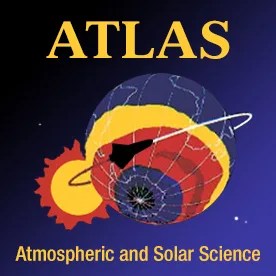ATLAS
Atmospheric Laboratory of Applications and Science
Type
Launch
Target
Objective
ATLAS-1 studied the Earth's atmosphere and the Sun's influence on it over an entire 11-year solar cycle.

The Atlas Program
ATLAS-1, the first of the ATLAS series of Shuttle flights, was an important part of the long-term, coordinated research that made up NASA's Mission to Planet Earth. The ATLAS-1 solar science instruments and several of the atmospheric science instruments (MAS, ATMOS and SSBUV) flew on future ATLAS missions. Beyond its own science mission, a key goal of the ATLAS series was to provide calibration for NASA's Upper Atmosphere Research Satellite (UARS), launched from the Space Shuttle in September 1991. Two ATLAS-1 instruments, ACR and SUSIM, have direct counterparts aboard UARS, while other instruments aboard each mission were closely related. Repeated flights of the ATLAS instruments, which can be carefully calibrated before and after each flight, will allow for long-term calibration of UARS instruments.
This was the first of a series studying the Earth's atmosphere and the Sun's influence upon it over an entire 11-year solar cycle. ATLAS-1 experiments focused on four scientific disciplines: atmospheric science, solar science, space plasma physics and astronomy. By making simultaneous solar and atmospheric measurements on a global scale, scientists hope to unravel the complicated web of man's impact on the environment.
ATLAS-1 payload package:
- NASA's Atmospheric Trace Molecule Spectroscopy instrument and the Grille Spectrometer from Belgium, mapped trace molecules in the middle atmosphere during orbital "sunrises" and "sunsets,".
- Atmospheric Lyman-Alpha Emmissions instrument, developed by scientists in France and Belgium, measured common hydrogen and deuterium, or heavy hydrogen.
- The Millimeter-Wave Atmospheric Sounder (MAS) was a collaborative effort of Germany, Switzerland and the United States, and measured ozone, chlorine monoxide, water vapor, temperature and pressure in the middle atmosphere.
- The Shuttle Solar Backscatter Ultraviolet Experiment, whose measurements were used to calibrate ozone-measuring instruments.
Participants: Other countries participating in experiments on the ATLAS-1 payload are; Belgium, France, Germany, Japan, the Netherlands, Switzerland and the United Kingdom.
The European Space Agency provided operational support for the European investigations.




